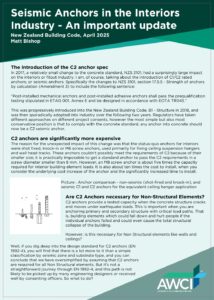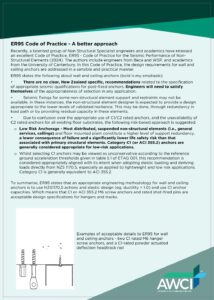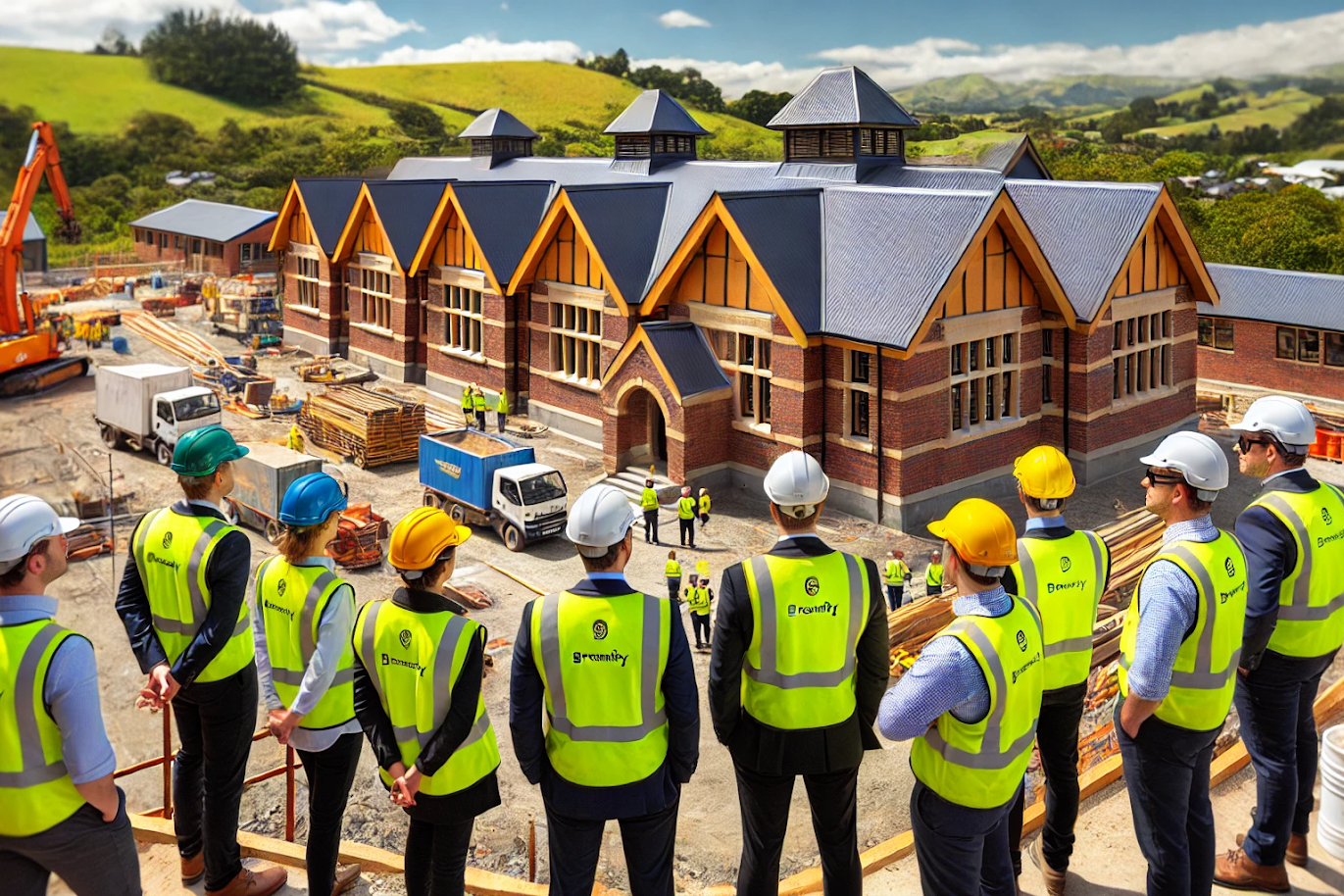In the world of interiors engineering, where form meets function and performance under pressure is everything, seismic anchoring has quietly become one of the most misunderstood—and overengineered—components in our industry.
At Brevity, we’ve always believed that great engineering is about knowing where to push the envelope, and where to simplify with purpose. A recent shift in the industry underscores why leadership means not just compliance, but clarity.
The C2 Conundrum
It began with a well-meaning change: a 2017 update to NZS 3101 introduced C1 and C2 seismic anchor classifications, later absorbed into the NZ Building Code. The intent was solid—ensure resilience when concrete structures crack under seismic stress.
But what followed was a blunt-force application of C2 anchors across both structural and non-structural elements. Suddenly, M6 anchors—once standard for ceiling hangers and wall tracks—were deemed insufficient. Replaced by M8 or larger, C2 anchors introduced massive inefficiencies: oversized capacity, tenfold cost increases, and significant delays on site.
We asked the obvious question: Are we overengineering for the wrong risks?
Introducing ER95: Sense Meets Science
The release of ER95 – Code of Practice for the Seismic Performance of Non-Structural Elements is a breath of fresh air. Developed by some of New Zealand’s top engineers and academics, ER95 provides a structured, risk-based pathway that reflects how interior elements actually perform during seismic events.
Its core insight? Not all anchors need to be C2.
For lightweight, low-risk elements like ceilings and partitions, C1-rated anchors are appropriate when designed with proper engineering using NZS1170.5. This opens the door to smarter, more cost-effective detailing—without compromising safety.
At Brevity, we’ve already begun adopting this approach on current and future projects, aligning with ER95’s framework while maintaining full compliance under the Building Code through the Alternative Solution pathway.
Compliance Without Compromise
Let’s be clear: using ER95 doesn’t mean cutting corners. It means targeting resilience where it matters most. Anchors still require proper engineering, calculations, and review by qualified professionals. But with the right documentation and consent process, clients can realize significant cost and time savings.
Importantly, ER95 dovetails neatly with the AWCI Code of Practice, which we helped shape with flexibility in mind. AWCI focuses on buildability, ER95 on design resilience—they’re complementary tools for a smarter interior system.
Leading with Intention
This is where Brevity steps forward—not just as an interiors engineering firm, but as a thought leader challenging inefficient norms. We believe seismic resilience is too important to be diluted by misapplied standards or fear-based conservatism.
The path forward isn’t one-size-fits-all. It’s calibrated. Intelligent. Based on risk, not rote.
What’s Next?
For consultants, contractors, and developers: the opportunity to rethink your seismic anchoring approach is here. Value engineer smarter. Specify early. And if you’re not sure where to start, we’re here to help.
We’ll walk you through the implications of C1 vs. C2, and how ER95 could be the smartest move your project makes.
Because at Brevity, we don’t just design for compliance—we design for clarity, economy, and enduring resilience.
You can find the AWCI Article here – Seismic Anchors in the Interiors Industry – An important message – AWCI
Fall Arrest Systems: How Fall Protection Compliance Differs Between Australia and New Zealand
While both Australia and New Zealand adhere to similar fall protection standards, their approaches to enforcement and…
Navigating Interiors Engineering Challenges in New Zealand’s Education Sector: Key Considerations for Architects
Designing interiors for educational facilities in New Zealand requires a precise balance between safety, functionality,…
A Unified Step Forward: Strengthening Seismic Resilience in Building Design
Two key documents, the AWCI Code of Practice for Suspended Ceilings and the BIP Code of Practice for the Seismic…




